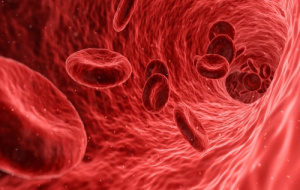Blood-taking: a new direction
 Keith Dorrington, Mary Dunhill Tutorial Fellow in Medicine, and Matthew Frise have published the “Lesson of the Month” in the Journal of the Royal College of Physicians under the title “Learning from Harvey; improving blood-taking by pointing the needle in the right direction.”
Keith Dorrington, Mary Dunhill Tutorial Fellow in Medicine, and Matthew Frise have published the “Lesson of the Month” in the Journal of the Royal College of Physicians under the title “Learning from Harvey; improving blood-taking by pointing the needle in the right direction.”
The paper argues that for a hundred years healthcare professionals have been taking blood from patients by inserting a needle in the “wrong” direction. This direction attempts to draw blood down the arm against the valves in the veins that permit flow only up the arm. It turns out that, for those patients with a large vein at the elbow, it matters little which direction is used, because the “antecubital vein” is like a reservoir fed by several veins from several directions.
However, when blood is needed from veins elsewhere, like on the back of the hand or the forearm, the established practice frequently leads to an inadequate sample, bruising, and the frustrations of a failed blood test, familiar to most people on whichever end of the needle they find themselves. Tracing the accurate description of the veins of the arm back to William Harvey in the early seventeenth century, Keith Dorrington and Matthew Frise have discussed how blood donations were always taken in the “right direction”, often with silver tubes inserted into veins, for nearly 300 years until an influential book by Geoffrey Keynes titled Blood Transfusion was published in 1922, which marked the change of direction to what everyone regards as the way to do it today.
Dr Dorrington said: “Recent anatomical studies support the case made by us, to doctors and other practitioners, to apply some science and common sense to reducing the frequency of failed phlebotomy. Physicians normally receive a personal paper copy of their journal; it will be interesting to see whether practice changes!”
Keith Dorrington is Associate Professor of Physiology at the University. He originally studied Engineering Science as an undergraduate before discovering the world of medicine via materials science. He worked on the development of artificial lungs to help patients with long-term respiratory problems. Dr Dorrington also teaches Physiology and Pharmacology to Univ’s undergraduate students in Medicine and Biomedical Sciences.
You can read the article online.
Published: 17 December 2019
Explore Univ on social media
